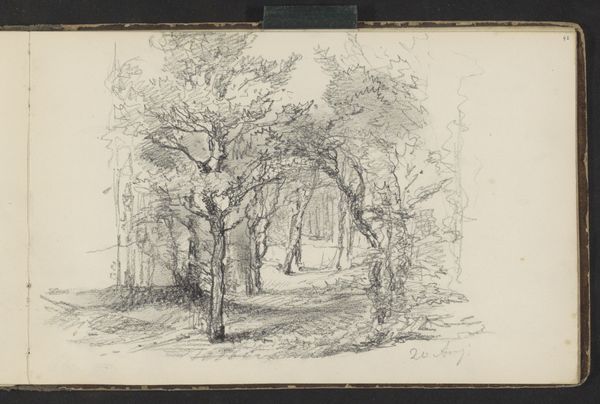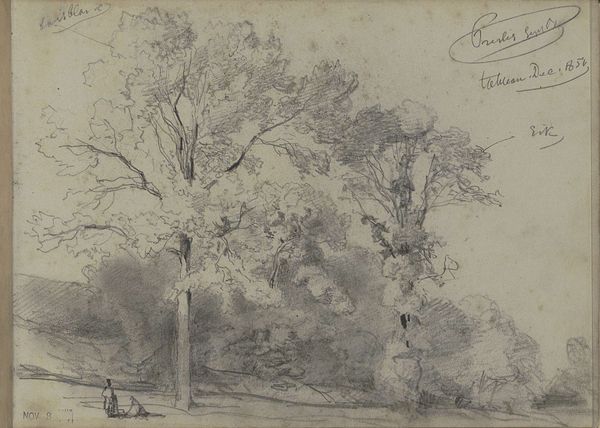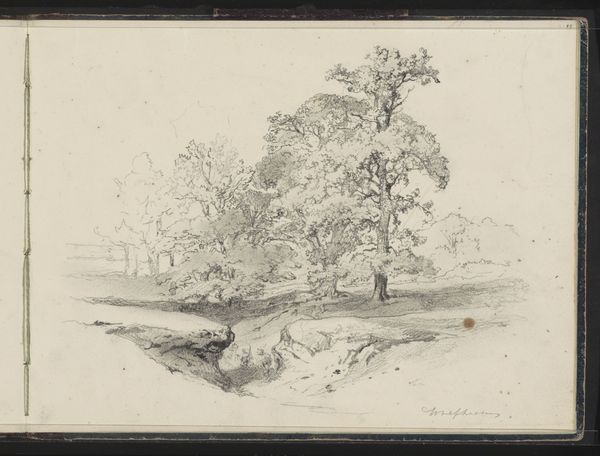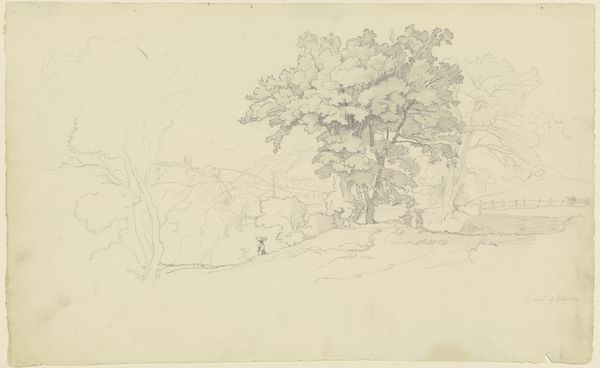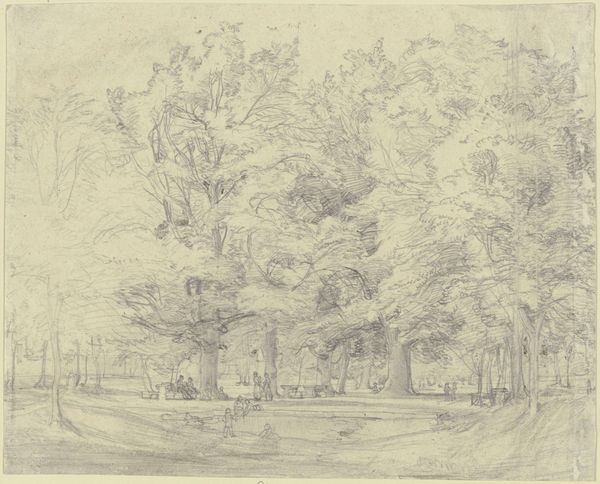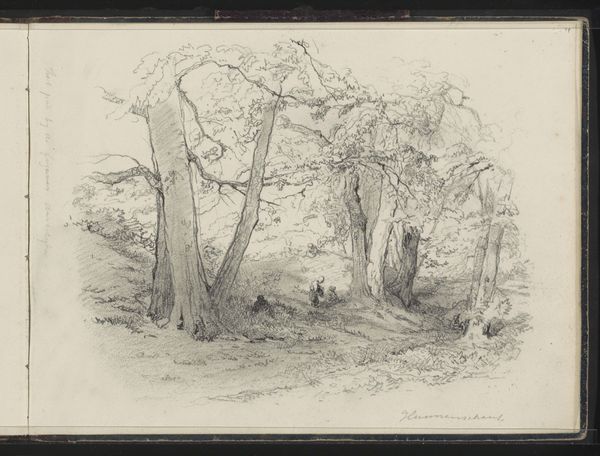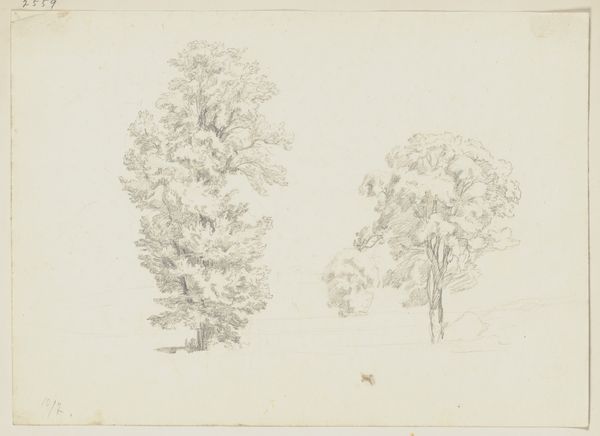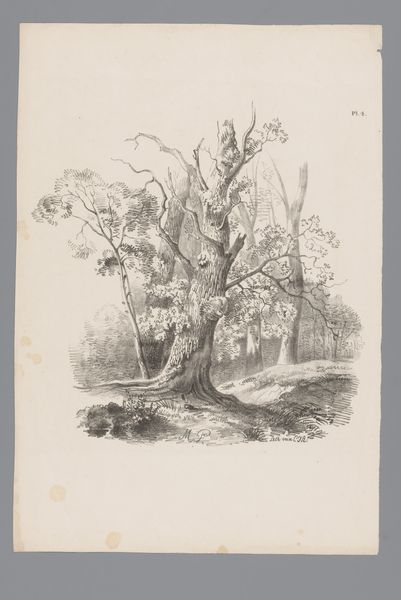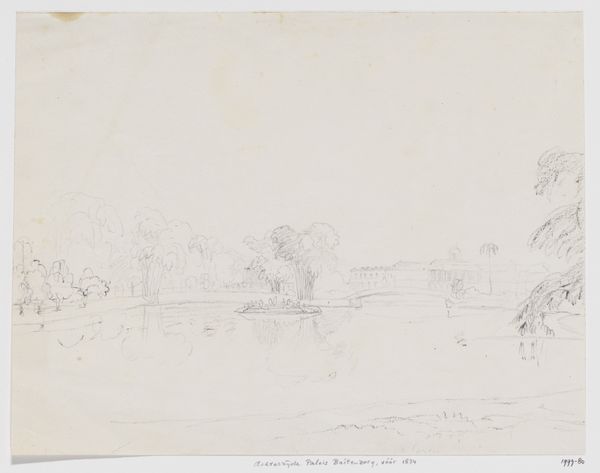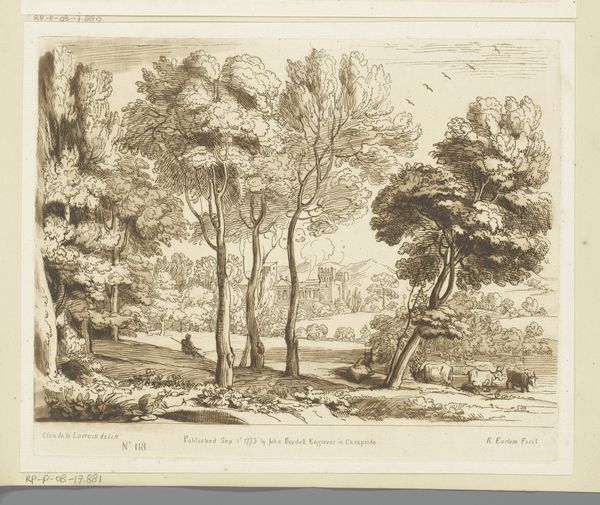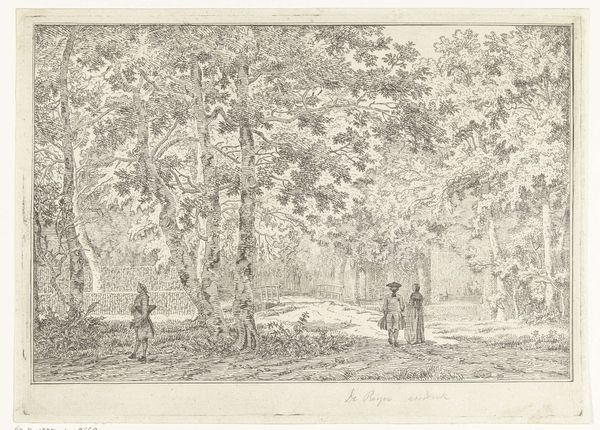
Dimensions: 265 mm (height) x 266 mm (width) (bladmaal)
Editor: This sketch by Anton Melbye, titled "En dal ved Beikos" or "A Valley near Beikos," was crafted in 1853 using pencil. What draws you to it? Curator: Immediately, I see an echo of Caspar David Friedrich, this sublime solitude suggested by the diminutive figures clustered near the massive trees. Is there any evidence indicating its possible psychological symbolism? Editor: I would start with the material conditions. Melbye likely employed locally sourced graphite for the pencil. Was this drawing intended as a finished artwork, or as preparatory work to produce prints perhaps, catering to a growing middle-class market eager for picturesque landscapes? Curator: Possibly. Consider the trees: their gnarly branches reach out like supplicating arms, almost mirroring those of the people seated beneath them, which creates an inescapable sense of spiritual yearning or a plea for something beyond their immediate existence. I mean, are the trees just providing shadow? Editor: Shadow yes, but also providing raw material. Were those trees selected from a commercial nursery or hewn directly from nature? Did their exploitation affect employment numbers in the nearby region, thereby changing patterns of trade and development in ways visible from different vantage points on this "valley?" Curator: Perhaps. And what about the act of observing? Doesn't the artist implicitly place the viewer, and by extension, themselves, in dialogue with both the natural and spiritual realms? Are these romantic symbols being replicated in other artistic communities? Editor: Agreed, and thinking about consumption… Consider also that the relative ease of creating sketches on location like this fuelled art-making by middle classes during the period, widening access, changing what and how art was produced. That availability also encouraged greater travel. How was this tied into broader commodity flows and trade networks that influenced production values and labor practices within the artistic profession? Curator: Food for thought, truly. What seemed a quiet scene suddenly feels entangled with worldly concerns. Editor: Yes, from a distance, the valley exudes serenity. Yet closer examination of materials, and methods, opens paths to trade, labor and maybe even, inequality.
Comments
No comments
Be the first to comment and join the conversation on the ultimate creative platform.
